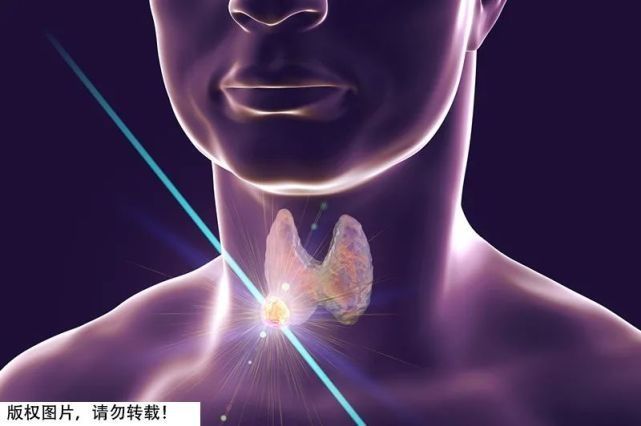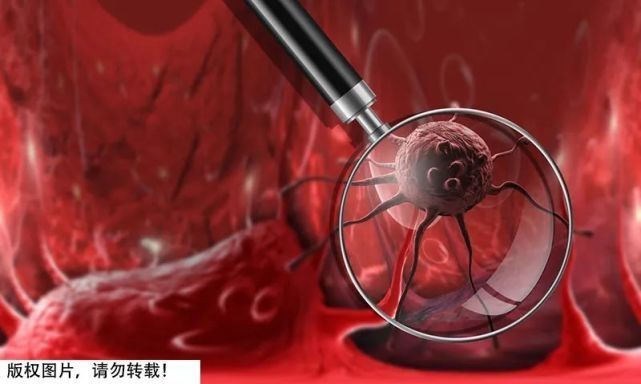[Source: Popular Science China]
In the middle of the year, is everyone’s medical examination on the agenda? When getting the medical report, the words “no abnormality” must be what everyone wants to see. However, there are also many people who have found nodules in their lungs, thyroid, breasts and other parts through physical examination. Because they are afraid of developing cancer, they are frightened all day, tossing and turning at night, and they want to quickly remove the matter.

A nodule is found in the physical examination, is it really “unavoidable”? How did the knot come about? Why do some people get lung nodules and others get thyroid nodules? Will it become cancerous? Don’t worry, let’s take a look with me.
How do nodules in the body come from?
A nodule refers to the abnormal proliferation of cells in various organs. It can also be understood as a “pimple” formed by abnormal proliferation of tissues and organs. It is usually found by imaging or palpation.
The “origin” of nodules is different, and the reasons are naturally varied.
pulmonary nodules may be related to long-term smoking, inhalation of air pollutants, chest trauma, lung inflammation, tuberculosis, and lung tumors.
thyroid nodules are closely related to genetic factors, autoimmunity, long-term exposure to ionizing radiation, and inappropriate iodine intake.

In addition, bad emotions can affect endocrine hormones, which are closely related to the occurrence of gland nodules such as thyroid and breast related. Breast nodules are one of the clinical manifestations of mammary gland hyperplasia. Breast pain usually occurs when mood changes and overexertion, and prolonged pain will affect the quality of life.
It is very important to maintain a regular work and rest, a relaxed and peaceful mind, talk to relatives and friends more often when encountering problems, maintain moderate exercise, and let “bad emotions” have a suitable outlet.
Can nodules become cancerous?
Not all nodules are cancerous, and it depends on the situation. Typically, a nodule needs to be examined pathologically in order to “decree” whether it is malignant or not. But we can judge the possibility of its malignant transformation through some “clues”.
Age:Thyroid nodules are more likely to be malignant in children and adults aged 60 years.
Gender:Men have a higher proportion of malignant thyroid nodules than females.
High-risk factors: Long-term smokers are about 20 times more likely to develop lung cancer than non-smokers; history of high-risk occupational exposure to asbestos and radioactive substances; family with lung cancer History of lung cancer, especially in first-degree relatives with a history of lung cancer, nearly tripled the risk of developing lung cancer.
Nodule morphology:Malignant nodules are characterized by unclear borders, irregular shapes, relatively abundant blood supply, and are prone to invasive growth around. Therefore, on the CT report sheet, if you see features such as burrs, lobulation, pleural depression, and vascular bundles, it often indicates a high possibility of malignancy.
Number of nodules:As the total number of pulmonary nodules increased from 1 to 4, the risk of primary cancer increased, However, the risk was reduced when there were five or more nodules. For individual pulmonary nodules, upper lobe distribution was associated with an increased risk of malignancy.

Nodule size: The risk of lung nodules becoming cancerous was positively correlated with nodule size. >80% of pulmonary nodules > 2 cm are malignant, the risk of malignancy is 1.3% for pulmonary nodules of 0.5-1 cm, and less than 1% of pulmonary nodules with diameter ≤ 5 mm are malignant. Malignant features were exhibited within the following 2 years.
Concomitant symptoms:A malignant nodule may be present when compression symptoms or surrounding tissue are involved.
When the trachea is compressed, there will be symptoms of cough and shortness of breath.
Difficulty in speech may occur when the recurrent laryngeal nerve is involved.
Difficulty swallowing or pain when the esophagus is compressed.
If thyroid cancer metastasizes, chest pain, dyspnea, bone pain and neurological symptoms may occur.
Breast tumor pulling on the skin can cause orange peel-like changes, and if it is close to the deep part of the nipple, it can cause symptoms such as nipple retraction.
What should I do if I find a nodule?
The discovery of nodules does not mean that you have early stage cancer. After discovering a nodule, there is no need to be overly anxious, and it is not recommended to blindly self-medicate, and do not try all kinds of “home remedies” that have not been scientifically verified in order to eliminate the nodule.
Whether the nodule can be cured is related to the source, location, nature and pathological type of the nodule. What everyone needs to do is to bring the medical history information to seek medical treatment in time, and ask the doctor to conduct a comprehensive evaluation.

If the nodule is benign, take this opportunity to change bad habits and live a regular life Work and rest, regular medical follow-up.
If the nodule is suspicious for malignancy, after evaluation by a professional physician, ultrasound-guided fine-needle aspiration of the nodule can be performed for pathological biopsy. If cancer is diagnosed and no metastasis has occurred, surgical resection can usually achieve the purpose of cure; If metastases have occurred, combined treatment with radiotherapy and chemotherapy is required.
Anyway
Don’t panic if you find a nodule
go to the hospital for examination in time
span>
Expert of this article: Shiyun Wang, MD, Department of Endocrinology and Metabolism, Sixth People’s Hospital Affiliated to Shanghai Jiaotong University
Disclaimer: The copyright of this article belongs to the original author , if the source is wrong or your legal rights are violated, you can contact us by email, and we will deal with it in time. Email address: [email protected]